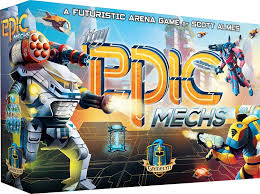

This was a recent pick up from a local game shop. Danny had been eyeing this game as he had apparently missed it on Kickstarter and liked the idea of the clear cards. To be fair, that was all I knew about the game before we played it last night with Chris.
The Game
In Canvas, each player begins with 3 background cards. These really have no impact on strategy as they are all the same other than some aesthetics at the top that only come into play in a third level tie break. But, they create a neat background for your “artwork.” Laid out in front is the canvas material play mat of the game. Across the top are your 4 “challenges” They each have a condition to earn them as well as the points earned per ribbon you get from them. Most are maxed at 3 ribbons, but a few of them you can get more. Each round is played with 4 of these and then bonus tokens available as well. All of the “art cards,” which are clear acetate cards with the exception of the artwork, are shuffled together and placed in a box so you can’t see what is coming up next. The top 5 are dealt out in order to create your starting gallery.
On each turn, you may elect to either take an art card or complete one of your paintings. Paintings are made of up 3 cards that you select based on their attributes on the bottom and the challenges at hand to maximize your points. Then you place them in the sleeve with your background card and score it during your turn when you opt to make a painting. You have a maximum hand size of 5 at a time so you may be forced to make a painting one turn. The game ends once all players have made 3 paintings.
Another element to the game is in selecting the art cards. While 5 are showing, you may take the one furthest from the deck for free or spend inspiration tokens to skip to a different card in the gallery. When you do this, you place the inspiration tokens on the one you skip, making it more valuable to another player since when they take that card, they also get inspiration tokens.
Sounds pretty simple, right? In the recommended first round game, it is, but as you start subbing in different challenges, it can get more interesting.
The Review
To be honest, when Dan first told me about this game, I didn’t have a lot of interest, but as we played it I enjoyed it. All 3 of us must have as we got 4 plays of it in – while having a missing key crisis. There is a good bit of strategy with regards to which art cards to pick and how they will layer together and then oftentimes, you have to sort of select which of the challenges you’re going to aim for. In several rounds we played, it would have been impossible to get all 4 ribbons on the same art piece, or nearly impossible. So, you have to determine which one you’re going to prioritize. Maybe it is based on the maximum point value for you. Maybe it is based more on the pieces you see and think you can accomplish more. Maybe it is based on what other players seem to be favoring and trying not to compete with it. It does benefit you to aim to get multiple ribbons of the same color so think about which ones you can focus on accomplishing repeatedly.
One thing that I missed that would have possibly changed my game play a little bit, you max out at the number of ribbons on that objective. So for example, even on an objective you can earn multiple times with one art piece, if there are only 4 on the card, it doesn’t help you to earn 6 like yours truly did over here in game 3.
Overall, the game play is fun. There’s some good strategy but it is also simple enough to bring to a new group. Set your objectives to a beginner level and you’re good to go. Rather than following some suggestions that we later realized were on the back of the rulebook, for games 2 and 3, we just shuffled them together and picked 4 at random. It still worked out, so don’t be afraid to try that.
Because of the assortment of challenges and the randomness of which art is available for which cost, this game has great replayability. LIke I mentioned, we played 4 games last night and had it not been late – and we still hadn’t found the keys – we probably could have kept going. We weren’t over the game or anything. None of the 4 we played ever felt the same or played the same. I also didn’t feel like by game 4 I had figured out the strategy or anything since the strategy really changes each game with different challenges at the top.
Two sort of tips… First, don’t be afraid to be working on 2 paintings at a time, especially at first. Don’t waste up all of your inspiration tokens if there are some up for grabs just because it doesn’t fit your first painting. Second tip, when you’re down to that final painting, you might as well wait until you have 5 cards. It doesn’t hurt to have unused cards and something may come available that improves yours even more. You don’t have to always go 3 cards and out, let them build up until you have that 5 cards. It is an opportunity to maybe improve your art, or to mess with your opponents and prevent them from getting something. But once you complete that third painting, you no longer have a turn, so hold on to it, don’t make the painting until your last chance.
Also, to be honest, I am up in the air about if I would like this as a 2 player game. With 3, there is enough strategy and movement in the art cards that you’re focusing on your painting and seeing something new, but with only 2 players, I am not sure I would feel the same.
The Results
In the 4 games played, Addie won 2, Danny won 1, and Chris won 1 so it was a bit more fairly balanced than some others we have brought to the table. The highest scoring game was our first round, by far.
The Challenge
New to us games: 10
Total Plays: 41
10 x 10 update: Zingo – 8; Ticket to Ride and Mint – 7; King is Dead, Fleet, and Canvas – 4




